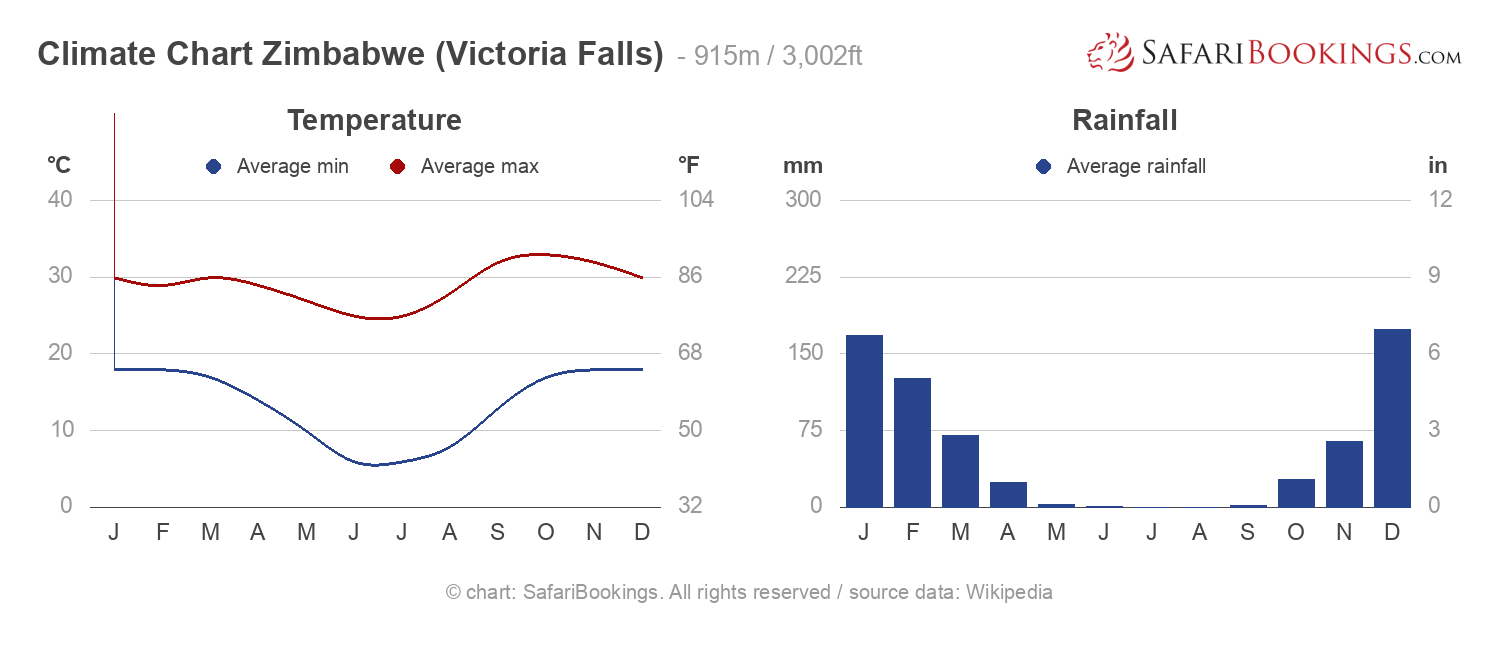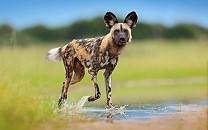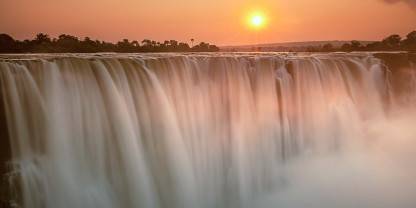
Climate Chart Victoria Falls – 915m / 3,002ft
Zimbabwe enjoys a lovely, temperate climate. The central Highveld plateau has temperatures up to 28°C/82°F. Lower-lying Hwange and Zambezi National Parks are warmer year-round. Mana Pools, Matusadona and Gonarezhou National Parks are even lower and get hotter, with temperatures soaring to 35°C/95°F.
During the Wet season (November to March), rains usually fall in the afternoon. The Dry season (April to October) is colder. Nights and mornings can be as cold as 5°C/41°F, but daytime temperatures are still pleasant and sunny.
Dry Season April to October – Winter
 View Photos
View Photos
During the Dry season there is virtually no rainfall and humidity is low. Wildlife will concentrate around waterholes and rivers when other water sources dry up.
- April & May – This is the end of summer. Temperatures are relatively cool, typically around 10°C/50°F in the morning and 28°C/82°F in the afternoon. The nighttime temperatures start to drop. By May, the rain is almost gone.
- June, July & August – Be sure to pack warm clothes because early morning in open vehicles will be cold. The average morning temperature is 6°C/43°F. Afternoons will be more pleasant with temperatures around 25°C/77°F. Parks at lower altitude will be warmer.
- September & October – The heat gradually builds and peaks in October. The first rains sometimes fall in late October, bringing relief from the very dry conditions. The lower-lying areas get very hot with temperatures of 32°C/90°F and well above.
Dry Season Photos
Wet Season November to March – Summer
 View Photos
View Photos
Practically all of Hwange’s rain falls over the warm summer months of November to March. Wildlife is more difficult to locate during this period, as animals tend to go deep into the bush.
- November – This month is unpredictable and it might start raining some afternoons. Temperatures are between 18°C/64°F in the morning and 32°C/90°F in the afternoon. Parks in the central Highveld plateau will be colder, and parks at lower altitude will be considerably warmer.
- December, January, February & March – These are the wettest months, characterized by short but often dramatic afternoon thunderstorms. Nights and mornings are warm at around 18°C/64°F. Afternoon temperatures are around 30°C/86°F and the humidity is high, making it feel hotter.





